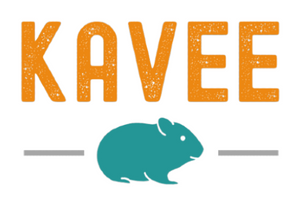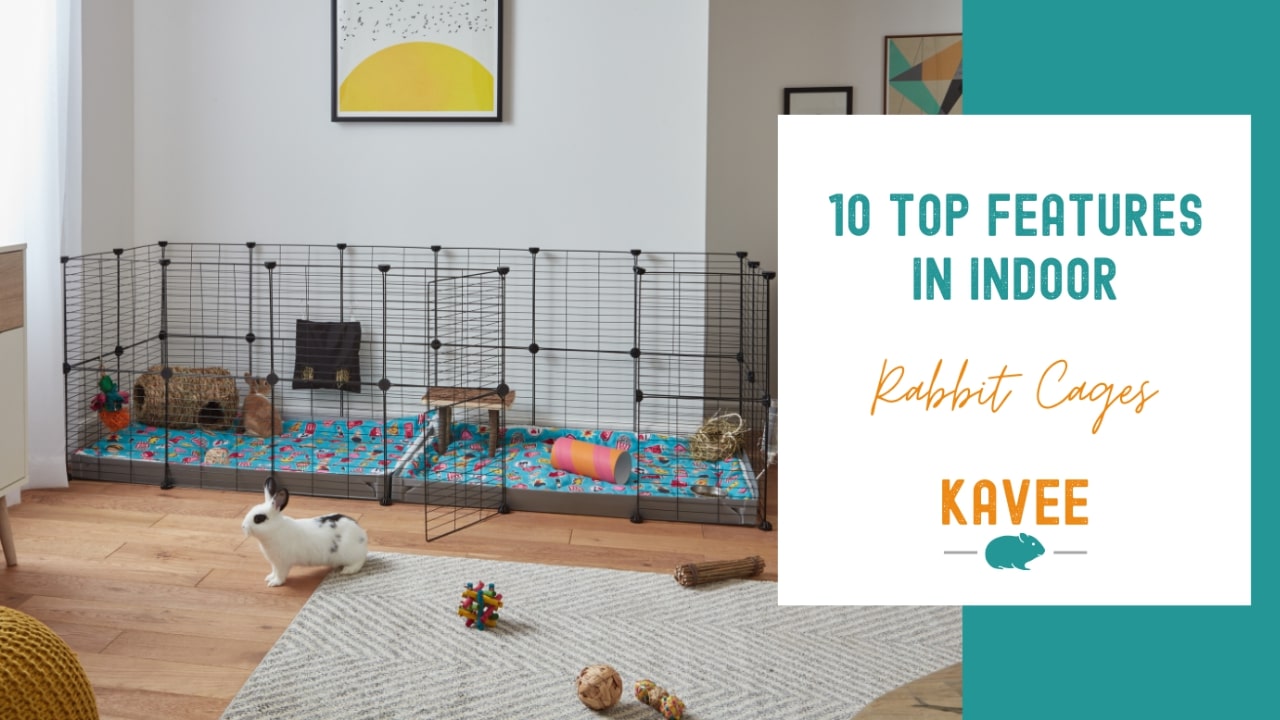Choosing a rabbit cage may seem like a pretty straightforward purchase. After all, what more do you need other than… well, somewhere to conveniently house your buns?!
But when there is such an a-bun-dance of options available, it’s important to know what to look out for. Their health and long-term hoppiness rest on this all-important decision!
While we do recommend that indoor rabbits get access to a spacious play area, it’s also important to provide them with a secure cage where they can rest and be safely housed when you’re out of the house.
From size considerations to recommended cage materials, here are the 10 features you should prioritize when looking for the best indoor rabbit cage.

Space
The number one priority should be providing them with space - and plenty of it! Rabbits are incredibly active animals that need room to run, stretch, hop, play, and stand up fully on their hind legs. Without it, they can become irritable, sad, and even sick.
Regardless of how small they might be, their big personalities and tight training schedules call for a spacious living area. Even if they can roam freely somewhere, they still shouldn’t feel crammed when they go inside their cage.
Rabbits vary in size based on their breed so there is no one-size-fits-all approach. As a general rule of thumb, an indoor rabbit cage should be at least 3x their length, 1.5-2x their width, and 1.5-2x their height. But if you have the space available, we always advise the bigger, the better.
Here at Kavee, we like to exceed the minimum space requirements with cages ranging from 12 square feet to a whopping 21 square feet. Plenty of room for ecstatic binkies!
Safety
Safety is another crucial factor to consider when choosing a rabbit cage. A secure cage will ensure that your rabbits won’t find their way to any potential hazards in the home whenever you can’t supervise them.
An optional lid can also help deter any other household pets from getting too close to your bunny. However, never leave your buns unattended when other pets go near them.
Since we’re dealing with expert nibblers, it’s also important that the cage you pick isn’t made with materials that are toxic to your bunny (but more on that later!).
A sturdy, locking construction like that of our C&C design will ensure that no tape, plastic, or glue will come near your buns.

Ventilation
Bunnies love moderate temperatures, so anything too hot or too cold is likely to cause them discomfort. While this can be easier to achieve indoors, the type of rabbit cage you select will also influence the temperature of your bunnies.
You’ll want to choose an indoor rabbit cage that offers proper ventilation. Opt for a grid-like structure over a solid material (e.g. wood) to encourage active airflow; this will go a long way to help your buns regulate their own temperature and stay cool.
Poorly ventilated cages can lead to illness and even fatal conditions like heatstroke - so don’t take this lightly! The same goes for keeping your rabbit cage near a radiator or windows that constantly face the sun.
Easy to Clean
Since you’ll be spending a good chunk of time cleaning your indoor cage for rabbits, it’s important to choose one that allows for easy maintenance. If there are any hard-to-reach spots, it’ll only be a matter of time before they get so grimy that they affect the health and wellbeing of your poor floof.
Instead of trying some acrobatic moves to scrub every inch of your indoor rabbit cage, you can save yourself some elbow grease and pick a cage that gives you full access to every corner for easy cleaning.
You will be eternally grateful to your past self if you opt for features like a removable cage lid, a solid Coroplast base, and wide, adjustable doors. All of these make daily and weekly cleaning a hundred times quicker and simpler.
Durability
Let’s be honest, your bunnies won’t think twice before getting a taste of their brand-new cage. After all, rabbits love to chew on anything in their immediate environment - including their cage bars. So you’ll want to make sure that their home is made of tough, chew-proof, and non-toxic materials.
The best indoor cage will be one that is sturdy enough to withstand bunny teeth but also not be coated with toxic products that are likely to wear off.
Keep in mind that another of your bunnies' favorite pastimes is to dig, and so it's important to also pick a base that will stand the test of time, like Coroplast.
Comfortable Flooring
Comfortable flooring will help prevent conditions like sore hocks - a painful health problem that can be exacerbated by keeping your bunnies on a surface where they can't comfortably dig their claws in (e.g. wooden floors or carpets).
As a responsible pet parent, make sure that your bunny’s cage has non-abrasive and non-slip flooring. Fleece liners make a great solution as they are designed to both absorb moisture and provide comfort.

Adequate Doors
As we mentioned before, it’s important to give your bunnies access to a spacious exercise area. Even better, one they can access anytime they like from the comfort of their cage. That’s where an easy-access door comes in, allowing your bunnies to freely hop in and out to their heart’s content.
If the cage you choose only has a door at the top, your bunnies won’t be able to get to their free-roaming area without your help. Plus, anytime you go to pick them up, you’ll have to do it from above - something that your little floof can find quite intimidating.
Simply opt for a side door to make life for your bunny (and yourself) much easier!
Room for Accessories
Their cage should be somewhere they find to be cozy and safe. If we were to ask you of a place that made you feel that way, it’s unlikely you’d answer ‘an empty room’. Same goes for your buns!
Everybunny needs to eat, drink, poop, play and hide, so you’ll want to make sure the cage you choose has room to accommodate everything. Think food bowls, water bottles, hay bags, and a variety of accessories designed for rabbits.
We’d also recommend you pick a cage that allows for fuss-free attachment and detachment of these accessories. This way, you can easily remove them from the cage whenever it’s time to clean up!

Appropriate Cage Material
There are many different types of indoor rabbit cages to choose from, and their materials play a significant role in their suitability:
Wire cages provide good ventilation but cause discomfort to rabbits’ paws.Wooden hutches provide sturdy housing but can’t regulate a bunny’s airflow.Plastic grids can easily get damaged and risk being ingested by the bunny.
So what is the best material for your indoor rabbit cage? In our experience, a metal grid cage with a sturdy coroplast base is the most durable and paw-friendly option for an indoor cage. We’ve tested many different materials before bringing our C&C cages to market, and we’re confident that they completely satisfy all of your rabbit’s needs.
Customization
Anything from deciding to bring another bunny home to moving into a place with more space for your furry friends calls for an instant upgrade. An indoor cage that is customizable will adapt to your every new need, saving you from having to re-purchase your cage whenever something changes.
C&C cages are designed to be easy to modify - from accommodating a cage divider for introducing bunnies to adding a lid for extra protection, and much more.
Conclusion
We hope that this quick rabbit cage guide has clarified exactly what you need to look out for when purchasing your fluffy friend’s home. To re-cap, healthy buns need:
- Plenty of room to maneuver
- A safe and secure environment
- Good ventilation and airflow
- An easily-maintained cage
- Durable materials to withstand bunny behavior
- Comfortable flooring for their paws
- Easy access in and out of their cage
- Accessories and essentials
- The right indoor cage materials
- A customizable home
As a team of small pet parents, our Kavee cages have been carefully developed with all of these important features in mind, so if you’re still on the lookout for the perfect home, then check out our gorgeous and practical range of indoor rabbit cages.
Your bunnies will thank you for it, we promise!





